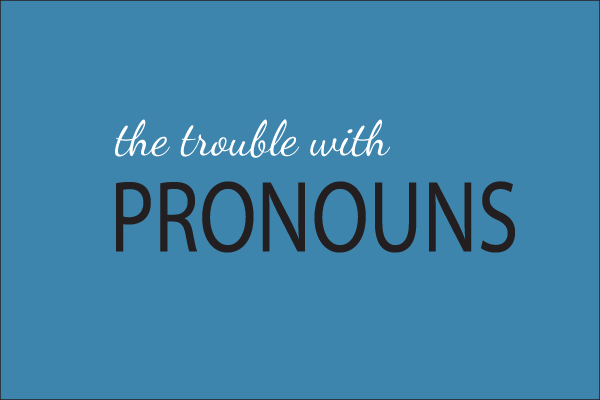I was reading a cute romance novel published by Amazon when I came across a paragraph that took me by surprise. The confusing sentence structure made me stop and reread. Then I figured it out, chuckled, and moved on. The second time it happened I didn’t laugh. The third time it happened I was pretty annoyed.
When authors write in third person the heroine is frequently referred to as she. “Nancy went to the store and she bought a loaf of bread.” That’s perfectly clear. But when you add another female, watch out! You’re opening the door to what’s called Pronoun Confusion—where the reader isn’t sure who’s doing what.
Imagine you’re the author. You’re in the flow, you picture the scene, and you write Nancy and Sheila having a conversation. Everything’s clear in your head. So of course it’s clear for the reader. Right?
Not always. Especially where two females are involved. Let’s see some examples.
Bad:
She told her she wasn’t sure if she should embrace her new business idea, and after weighing her pros and cons, she still couldn’t decide. (Pretty darn confusing. There’s no way to know who’s who.)
Better:
Nancy told Sheila Nancy wasn’t sure if Sheila should embrace her new business idea, and after weighing Sheila’s pros and cons, Nancy still couldn’t decide. (Much clearer, but really awkward.)
Best:
Nancy wasn’t sure if Sheila should embrace her new business idea. There were too many pros and cons. Even after weighing them all, Nancy still couldn’t decide. (Straightforward and clear.)
Even experienced authors can get into trouble with third person females (or males). It’s easy to make mistakes. (To my horror, I found some pronoun confusion in one of my early novels. Time to take out that red pen.) Most of the time, readers will just breeze through these problematic sections. Our brains are pretty advanced.
Authors, it’s much better to correct the errors before the book goes to print. Critique groups and beta readers will likely find these errors and point them out to you. In addition, make sure you have a good editor with a keen grasp of grammar and an eagle eye.

